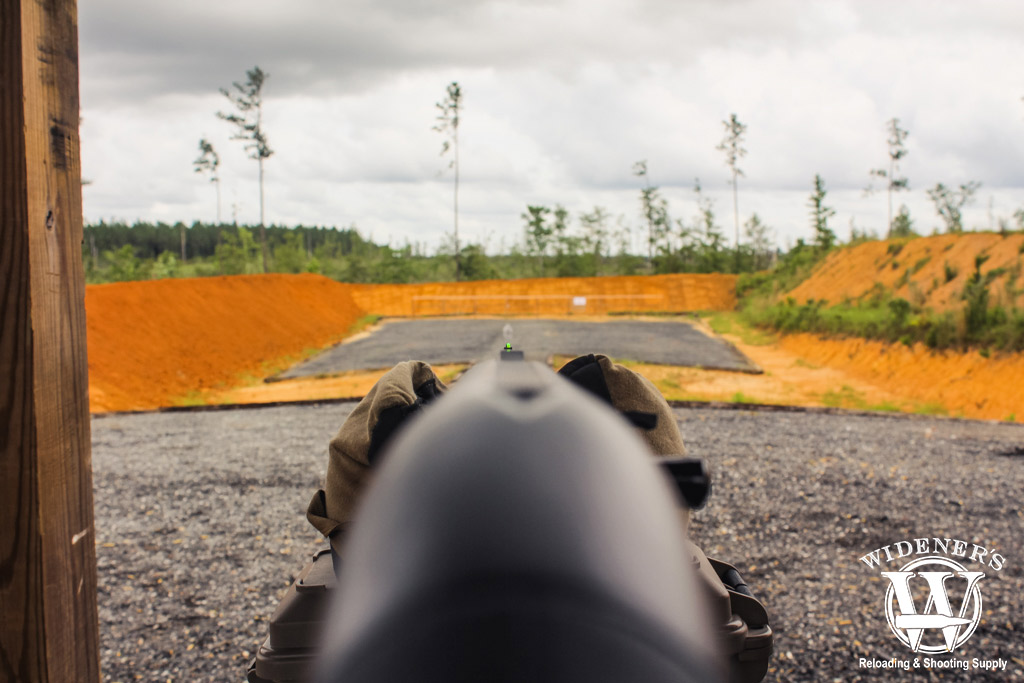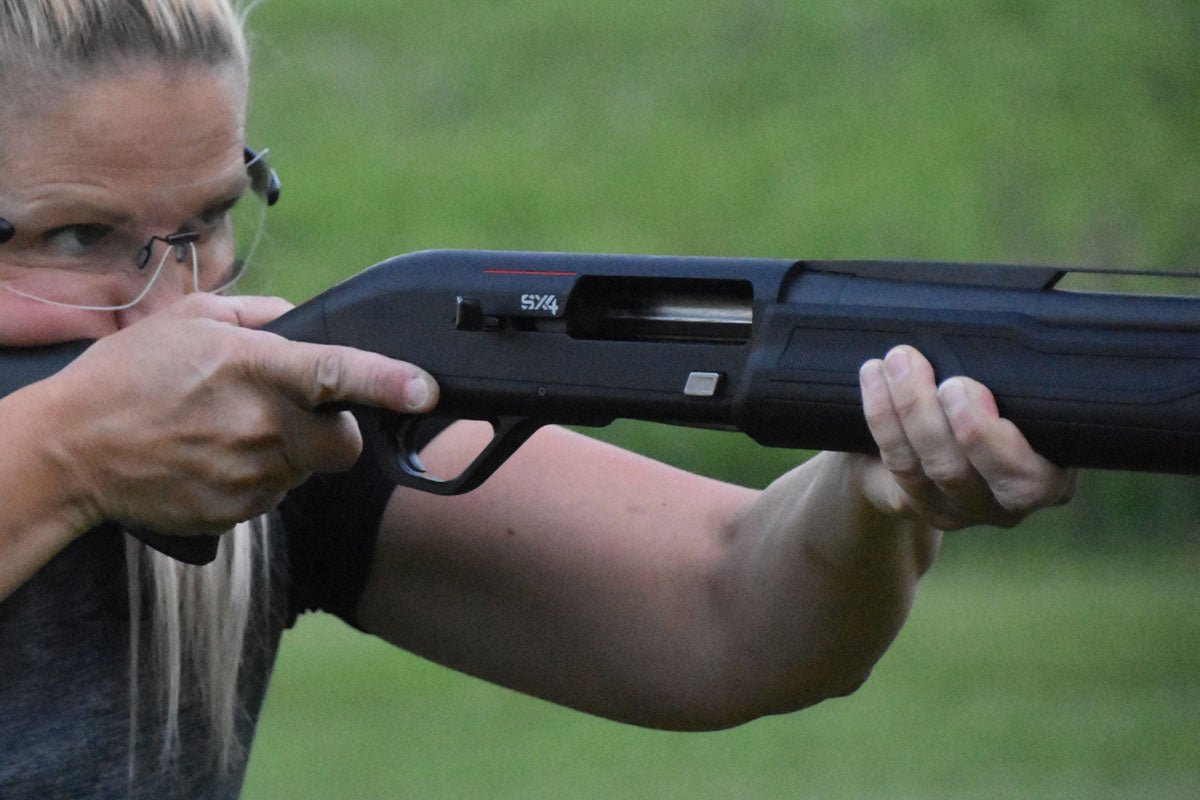Are you eager to master the art of aiming a shotgun but don’t know where to begin? You’re not alone.
Many beginners find themselves overwhelmed with the idea of handling such a powerful tool. But imagine the thrill of hitting your target with precision and confidence. This guide is crafted just for you, breaking down the essentials into simple, digestible steps.
By the end of this article, you’ll feel more at ease and ready to take your skills to the next level. So, are you ready to transform your shooting experience from uncertainty to mastery? Let’s get started!

Basics Of Shotgun Shooting
Learning to aim a shotgun can be exciting. Beginners often find the process challenging yet rewarding. Understanding the basics is crucial to improving skills and ensuring safety. With a little practice, accuracy and confidence can increase.
Understanding Shotgun Types
Shotguns come in various types, each with unique features. The most common types include pump-action, semi-automatic, and break-action. Pump-action shotguns require manual loading after each shot. Semi-automatic shotguns reload automatically but may need more maintenance. Break-action shotguns are simple and reliable but offer fewer shots before reloading.
Essential Safety Precautions
Safety is the top priority when handling shotguns. Always point the muzzle in a safe direction. Keep fingers off the trigger until ready to shoot. Ensure the safety is engaged when not firing. Wear protective gear like earplugs and safety glasses. Always check the barrel for obstructions before use. Following these precautions can prevent accidents and ensure a safe shooting experience.
Body Positioning
Mastering the art of aiming a shotgun begins with the right body positioning. Your stance and balance are crucial for accuracy and safety. Proper foot placement techniques enhance stability and ensure effective shooting. Let’s explore these elements to help beginners improve their skills.
Stance And Balance
A strong stance provides a stable foundation. Stand with feet shoulder-width apart. Bend your knees slightly. This absorbs recoil and keeps you steady. Keep your weight evenly distributed. Lean forward a bit for better control. Maintain a relaxed posture. This helps you move swiftly.
Foot Placement Techniques
Proper foot placement ensures optimal balance. Your lead foot should point towards the target. The rear foot should angle slightly outward. This provides stability and flexibility. Adjust your feet based on the shooting angle. It enhances your ability to pivot smoothly.
Try different positions to find comfort. Practice shifting weight between feet. This improves your adaptability during different shooting scenarios. Consistent practice refines your technique and boosts confidence.
Grip And Mounting
Proper grip and mounting are essential for aiming a shotgun. A stable grip ensures control. Proper mounting aligns your body with the gun. Both are crucial for accurate shots.
Proper Grip Techniques
Start by holding the shotgun firmly but not too tight. Keep your fingers relaxed. Place the butt of the gun against your shoulder. This helps absorb the recoil.
Wrap your dominant hand around the grip. Ensure your index finger rests on the trigger guard. Your other hand should support the forestock. This balance aids in steady aiming.
Effective Gun Mounting
Raise the shotgun smoothly to your cheek. The stock should fit snugly under your cheekbone. This keeps your eyes aligned with the sights.
Ensure the butt is tucked into your shoulder pocket. This minimizes movement during firing. Keep both eyes open for better field vision. It helps track targets easily.

Aiming Fundamentals
Learning to aim a shotgun begins with understanding basic stance and grip. Keep your feet shoulder-width apart for stability. Align your dominant eye with the barrel and target. Practice smooth, steady movements to improve accuracy and confidence.
Aiming a shotgun might seem daunting at first, especially if you’re a beginner. But with a few core principles, you can improve your aim and hit your target with confidence. Understanding the fundamentals of aiming is essential to making those crucial first shots count.Eye Dominance Testing
Knowing which eye is dominant is a game-changer. It’s the eye your brain naturally prefers for visual input. Here’s a simple test: extend your arms in front of you and form a small triangle with your thumbs and forefingers. Focus on a distant object through the triangle, then slowly bring your hands back to your face. Your hands will naturally align with your dominant eye. Knowing this helps you decide which shoulder to mount the shotgun on. It’s a simple tweak, but it makes a world of difference in accuracy.Aligning The Barrel
Once you know your dominant eye, aligning the barrel becomes straightforward. Always keep your head in line with the barrel. This ensures that your eye is directly over it, giving you a straight shot to your target. Imagine the barrel as an extension of your arm. When you raise the shotgun, it should feel natural, not forced. Practice mounting the shotgun to your shoulder smoothly. Consistency is key. The more you practice, the more muscle memory you’ll build, making alignment second nature. Taking the time to understand these fundamentals can significantly boost your confidence. Have you tested your eye dominance yet? Or maybe you’ve felt that awkwardness when the barrel isn’t aligned correctly? Share your experiences and help fellow beginners on their journey to becoming more accurate shooters.Target Acquisition
Target acquisition is vital for beginners learning to aim a shotgun. It involves identifying and focusing on the target. This skill helps improve accuracy and success in shooting. Mastering target acquisition requires practice and attention to detail.
Leading The Target
Leading the target means aiming ahead of a moving target. This technique compensates for the target’s movement. The lead distance depends on target speed and distance. Practice this by shooting clay pigeons. Start with slow-moving targets. Gradually increase speed as you improve.
Tracking Moving Targets
Tracking moving targets requires focus and patience. Keep your eyes on the target, not the shotgun. Smoothly follow the target with the barrel. Maintain a steady motion while tracking. Practice with different target speeds and directions. This builds confidence and precision.

Shooting Practice Tips
Getting comfortable with aiming a shotgun is vital for beginners. You might be wondering how to translate theory into practice effectively. The secret lies in consistent practice, both dry and live fire exercises. These tips will guide you on your journey to becoming a confident and skilled shotgun shooter.
Dry Fire Drills
Dry fire drills are a fantastic way to improve your aim without using ammunition. They allow you to focus on your stance, grip, and sight alignment. Set up a safe space at home or in a range where you can practice.
Start by shouldering the shotgun and aiming at a fixed point. Visualize hitting the target. Adjust your stance to find what feels comfortable and stable. Use a mirror to check your form; it’s an excellent tool for self-correction.
Regular practice with dry fire drills can dramatically enhance your muscle memory. It’s a method I used to refine my technique before heading to the range. How often do you practice at home?
Live Fire Exercises
Once you’ve nailed dry fire drills, it’s time for live fire exercises. They help you understand how the shotgun behaves with actual recoil. Safety should be your top priority, so always wear ear protection and safety glasses.
Begin with stationary targets to build confidence. Focus on your breathing and trigger control. As you grow more comfortable, try moving to clay targets for a dynamic challenge.
Remember, patience is key. I recall my first live fire session, where missing targets taught me the value of adjusting my aim. What’s the most valuable lesson you’ve learned while shooting?
Embrace each practice session as an opportunity to learn. Keep refining your technique, and soon, your aim will become second nature. Consistency and patience will pave the way to success in shooting.
Common Mistakes
Beginners often hold the shotgun incorrectly, leading to poor aim and missed targets. Misaligning the sights can cause shots to go astray. Many struggle with maintaining focus, resulting in inaccurate shooting and frustration.
Learning to aim a shotgun can be thrilling. But as a beginner, you might make some common mistakes that could hinder your progress. Understanding these mistakes and how to avoid them can make your learning experience smoother and more enjoyable. Let’s dive into some common pitfalls and how you can steer clear of them.Flinching And Anticipation
Flinching is a natural reaction when you’re new to shooting. It happens because you anticipate the gun’s recoil. This can cause you to jerk the shotgun slightly, throwing off your aim. Think about the last time you were startled by a loud noise. Your body probably reacted instinctively. Similarly, when you flinch, your muscles tense up unexpectedly. To combat this, focus on remaining calm and relaxed. Breathing exercises can help. Take deep breaths to steady yourself before shooting. You might find that visualizing your shot can also ease anticipation. Picture the target and your aim, rather than thinking about the recoil.Overthinking The Shot
Overthinking can be your worst enemy. It’s easy to fall into the trap of analyzing every detail, especially when you’re new. You might worry about your stance, grip, or timing, and this can cloud your focus. Consider the simplicity of your shot. The more you complicate it in your mind, the harder it becomes. Try focusing on one aspect at a time, like your grip or the target. This can ease your mind and improve your aim. Remember, practice makes perfect. You’ll find that as you gain experience, your confidence will grow. Have you ever noticed that athletes perform better when they’re in the zone? Achieving this mental state can help you stop overthinking and start shooting with precision. What are some mistakes you’ve made while aiming? Recognizing them is the first step to improvement. Embrace each error as a learning opportunity.Improving Accuracy
Learning how to aim a shotgun involves understanding proper stance and grip. Focus on aligning the barrel with the target. Practice helps improve accuracy and build confidence for beginners.
Improving your accuracy with a shotgun is not just about aiming; it’s about understanding, practice, and feedback. Many beginners get frustrated because they expect instant perfection. However, the key to becoming proficient lies in consistent practice and actively using coaching feedback. Let’s dive into these essential components.Consistent Practice
Practice makes perfect isn’t just a saying; it’s a reality in shotgun shooting. Regular practice helps build muscle memory, making your actions instinctive. Start by setting a schedule. Shooting once a week is a good place to begin. This routine helps maintain your skills and improve over time. Vary your practice scenarios. Try different distances and angles to adapt to various situations. This will enhance your adaptability and precision. Practice doesn’t mean just shooting. Spend time cleaning and maintaining your shotgun. This builds familiarity with your firearm and ensures it’s in optimal condition.Using Coaching Feedback
Feedback from an experienced coach can be a game-changer. They see things you might miss, like posture or trigger control. Seek out a coach who understands your learning style. A good coach will offer constructive criticism and guide you to improve. During a session with a coach, ask questions. Understanding the ‘why’ behind their advice will help you apply it more effectively. Review the feedback after each session. Reflect on what you’ve learned and how you can implement it next time. This reflection turns feedback into actionable steps. Have you ever noticed how small adjustments can make a big difference? Sometimes, it’s just a slight change in stance or grip. Coaches can point these out, leading to significant improvements. Incorporating consistent practice and coaching feedback into your routine can dramatically enhance your accuracy. How will you apply these insights to your next session?Frequently Asked Questions
How Do I Hold A Shotgun Correctly?
To hold a shotgun correctly, keep your feet shoulder-width apart. Grip the shotgun firmly with both hands. Your dominant hand should be on the stock, and your other hand should support the forearm. Ensure your elbows are slightly bent for better control and flexibility when aiming.
What Is The Best Stance For Aiming?
The best stance is the athletic stance. Stand with your feet shoulder-width apart. Position your dominant foot slightly back. Lean slightly forward to maintain balance. This stance helps absorb recoil and provides better stability when aiming. Practice this stance regularly to improve your shooting accuracy.
How Can I Improve Shotgun Accuracy?
Improving shotgun accuracy involves consistent practice and proper techniques. Focus on your stance and grip. Ensure your eyes are aligned with the barrel. Practice aiming at stationary and moving targets. Regularly clean and maintain your shotgun. Joining a shooting club can offer helpful tips and practice opportunities.
Why Is Sight Alignment Important In Shooting?
Sight alignment ensures your aim is accurate. Align the front sight with the rear sight, keeping them level. This helps target accurately and improves shooting precision. Regular practice with sight alignment enhances your accuracy and confidence. Consistent focus on sight alignment can significantly reduce missed shots.
Conclusion
Learning to aim a shotgun takes practice and patience. Start with understanding your shotgun’s basic parts. Hold it steady and align your sights. Focus on your target, keeping your eyes on it. Practice regularly to improve your skills. Use the proper stance for balance and control.
Safety is crucial; always handle your shotgun responsibly. With time, your confidence will grow. Enjoy the process, and don’t rush. Remember, practice makes perfect. Your aim will improve with dedication. Stay safe, and happy shooting!



